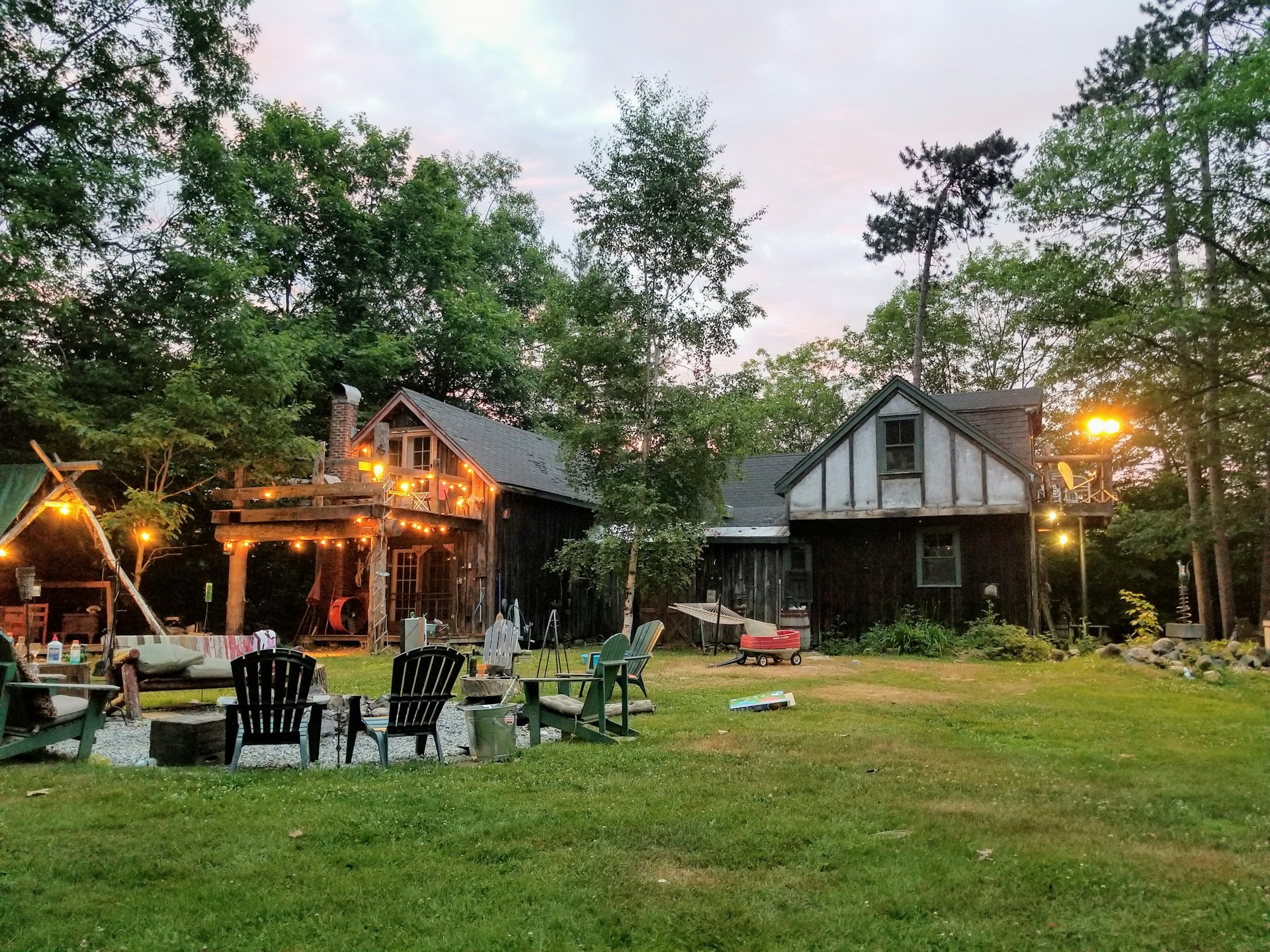

Question: What is a Dwelling That Has Two Residential Units?
Answer: A dwelling that has two residential units is commonly referred to as a duplex. It consists of two separate living spaces within the same structure, each with its own entrance, kitchen, bathroom, and living areas. Duplexes are a type of multifamily housing and are often used for rental purposes or as homes for extended families.
What is a Dwelling That Has Two Residential Units? Dwelling in Duality
The concept of a dwelling with two distinct living spaces is not new. Throughout history, duplexes, townhouses, and other multi-unit structures have provided housing options for various needs. Explore the different types, potential benefits and drawbacks, and considerations for those contemplating such a property. [ 1 ]
Beyond Single Family: Types of Two-Unit Dwellings
Two-unit dwellings come in a variety of configurations, each with its own characteristics:
-
Duplexes:
These are side-by-side dwellings, typically with identical floor plans on each side. They share a common wall but have separate entrances, kitchens, and bathrooms. -
Semi-Detached Homes:
Similar to duplexes, these dwellings are attached along a shared wall but may have slightly different layouts or exteriors. They often offer more living space than duplexes. -
Townhouses:
These multi-unit structures share common walls with neighboring units but have separate entrances and typically multiple floors. They can vary in size and design, offering a range of living space options. -
In-Law Suites:
These are secondary dwelling units created within a single-family home, often in a basement or attic with a separate entrance. In-law suites can be ideal for multigenerational living or generating rental income. -
Stacked Townhouses:
These are two-unit dwellings where one unit sits directly above the other, with separate entrances on different floors. They are a space-saving option often found in urban areas.
The specific type of two-unit dwelling that suits your needs will depend on factors like budget, desired living space, and potential use of the second unit.
Click here to read more about multi family real estate
Click here to get multi family home prices
Related Article: What are the Rules for Tiny Homes in Ontario?
Related Article: What is an Accessory Dwelling Unit in Ontario?
Weighing the Advantages: Potential Benefits of Two-Unit Dwellings
Two-unit dwellings can offer several advantages for homeowners and investors:
-
Increased Income Potential:
Renting out the second unit can generate income to help offset mortgage costs or provide additional financial security. -
Multigenerational Living:
In-law suites within a two-unit dwelling can provide a comfortable and independent space for aging parents or adult children, fostering close family ties. -
Reduced Housing Costs:
In some cases, the cost of purchasing and maintaining a two-unit dwelling can be more affordable than purchasing two separate single-family homes. -
Efficient Use of Space:
Duplexes and townhouses often offer efficient use of space, making them suitable for urban areas with limited land availability. -
Potential for Appreciation:
Two-unit dwellings can offer good long-term investment potential as the demand for rental housing remains high in many regions.
However, it’s important to consider potential drawbacks as well.
Considering the Drawbacks: Potential Challenges of Two-Unit Dwellings
Two-unit dwellings can also present some challenges that require careful consideration:
-
Increased Management Responsibilities:
Landlords who rent out the second unit are responsible for tenant management, repairs, and maintenance within the rented space. -
Privacy Considerations:
Living in close proximity to another family can impact privacy. Careful design and clear boundaries can help mitigate this. -
Potential for Noise Concerns:
Shared walls and potential for noise transmission can be a concern for both occupants of the dwelling. Proper soundproofing can help. -
Limited Control Over Second Unit:
If you don’t intend to rent out the second unit, having another family share the property may limit your overall control and privacy. -
Zoning Regulations:
Municipal zoning bylaws may restrict the construction or presence of two-unit dwellings in certain areas. Researching local regulations is crucial.
Weighing the potential benefits and drawbacks is essential before deciding if a two-unit dwelling is the right choice for you.
Financing Considerations: Funding Your Two-Unit Dream
Financing a two-unit dwelling can differ from financing a single-family home. Here are some key points to consider:
-
Higher Down Payment:
Lenders may require a higher down payment for two-unit dwellings compared to single-family homes. -
Investment Property Loans:
In some cases, investment property loans with different interest rates and terms may be available. -
Rental Income Potential:
Lenders may consider potential rental income from the second unit when determining mortgage eligibility. -
Consulting a Mortgage Broker:
A mortgage broker can help you explore financing options and navigate the specific requirements for two-unit dwellings.
Careful research and financial planning are essential to ensure you can comfortably afford the purchase and ongoing costs of a two-unit dwelling.
Finding the Right Fit: Selecting a Two-Unit Dwelling
The search for a two-unit dwelling requires considering several factors beyond just location and price:
-
Type of Dwelling:
As discussed earlier, the type of two-unit dwelling (duplex, semi-detached, townhouse, etc.) will significantly impact factors like living space, privacy, and potential rental income. Choose the type that aligns with your needs and lifestyle. -
Condition of the Property:
A thorough inspection by a qualified professional is crucial to identify any potential repairs or renovations needed in both units. Factor these costs into your overall budget. -
Rental Market Analysis:
If you plan to rent out the second unit, researching the local rental market can help determine potential rental income and inform your investment decision. -
Management Considerations:
If you don’t plan to manage the rental yourself, factor in the cost of hiring a property management company. -
Community Amenities:
Consider the surrounding neighborhood and access to amenities like schools, parks, and public transportation, which can be attractive to potential tenants.
By carefully considering these factors, you can increase your chances of finding a two-unit dwelling that aligns with your needs and investment goals.
Considerations for Two-Unit Dwellings
Living in a two-unit dwelling requires some adjustments compared to a single-family home:
-
Communication and Boundaries:
Clear communication and established boundaries with the occupants of the second unit are essential for maintaining a harmonious living environment. -
Respecting Privacy:
Be mindful of noise levels and shared spaces to ensure privacy for all occupants. -
Maintenance Responsibilities:
For owner-occupied units with a rented unit, understanding the division of maintenance responsibilities between owner and tenant is crucial. -
Building Relationships:
If you plan to live in close proximity to family in the second unit, fostering positive communication and respecting boundaries can strengthen family bonds.
Living in a two-unit dwelling can be a rewarding experience, but it requires a thoughtful approach to communication, respect, and management.
For more information visit https://www.jenjewell.ca
Conclusion
Two-unit dwellings offer a unique housing option with potential benefits for homeowners and investors. By carefully weighing the advantages and drawbacks, considering financing options, and selecting the right property, you can transform a two-unit dwelling into a successful investment or a comfortable living space for yourself and another household.
References
1. https://publications.gc.ca/collections/collection_2022/statcan/98-500-x/98-500-x2021001-eng.pdf


